In the Studio: Samira Abbassy
“My attempt in depicting the human form is almost like a psychic x-ray, so the n...
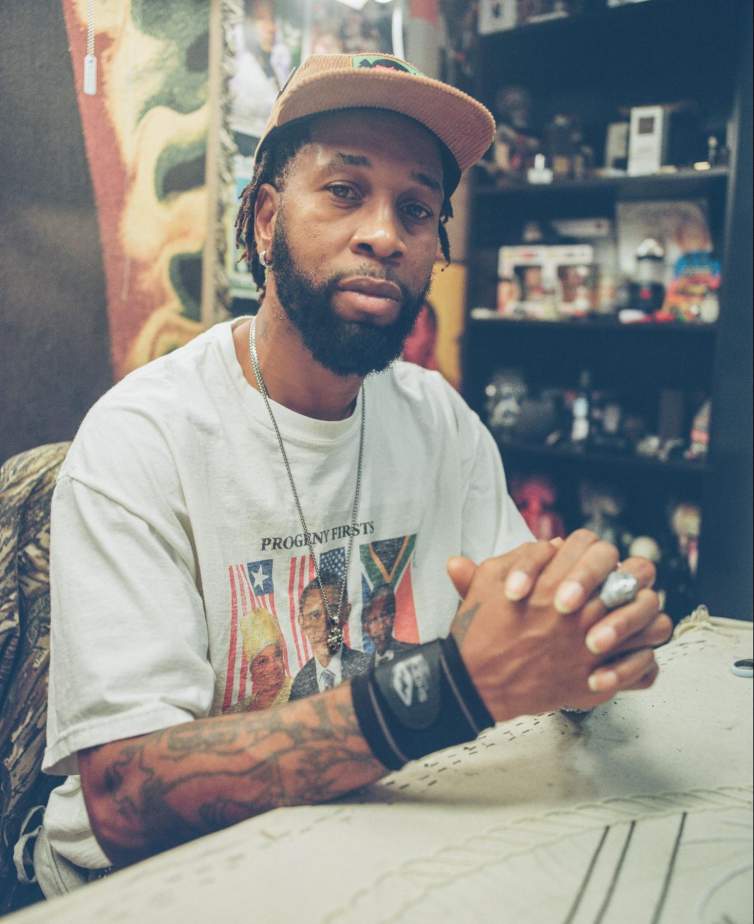
Demond Melancon is a native New Orleans artist, Big Chief of the Young Seminole Hunters, and a 2023 Joan Mitchell Fellow. We interviewed him about his work and creative practice in February 2024. The following is an edited transcript of that conversation.
I'm a Black Masking Big Chief in New Orleans. People know us as the Mardi Gras Indians. For almost 32 years, I've been beading and making suits. I'm a contemporary artist, but I'm a bead artist.
When I was a kid coming up, every year at Mardi Gras, I’d go to the Zulu Parade with my grandpa, then come home, go outside, and start playing in the streets, playing football. Around one or two o'clock, the Indians would start coming around. I used to follow them when I was a kid with my mom, after Mardi Gras, after the parades.
Once I got older and went to junior high school, at lunchtime, kids would play football, baseball, basketball, whatever. But my friends that I had met in my first year of junior high school, instead of playing football and stuff on the schoolyard, they would sing Mardi Gras Indian songs. I was familiar with the songs, and I always wanted to be Indian, but I never knew anybody who was.
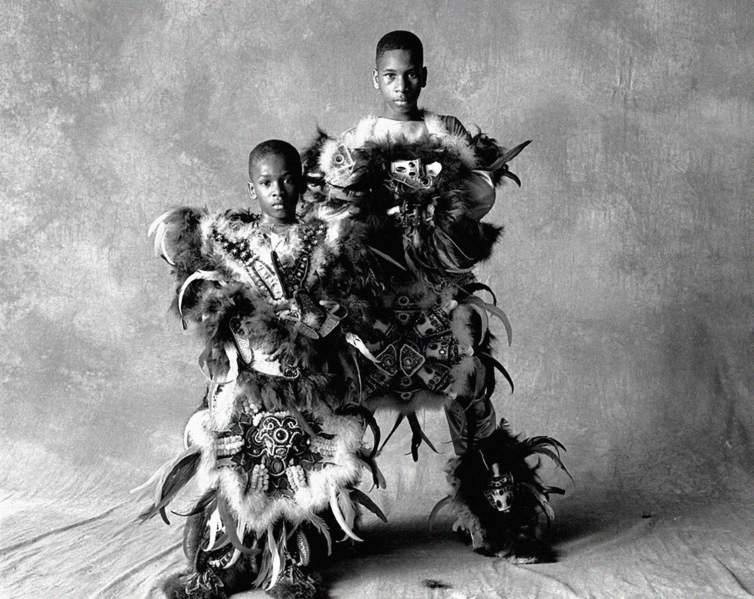
But these classmates, my new friends, they were Indians. On March 19th, every year—in New Orleans, it’s called St. Joseph’s Night—that's when the Black Maskers come out and mask at night. I remember on that day, we were playing on the yard at school, they're singing the Indian songs, and they're chanting. And when it was time to go inside from lunch, from recess, my friends started going under the gates. I was like, “Where are they all going together? “ And they said, "Home! We’re going to get ready.” I'm like, "What?! Man, I'm coming."
So I cut school with them. We left at lunchtime, and we walked to the Seventh Ward, to my friend Markieth’s house, and my other friend, Emmanuel—God bless his soul, he passed, but he had a suit. My friend Jeremy, he had a suit. All of these guys were the young Pocahontas, they all masked with Tootie Montana. I was like, "Man, I'm in the right place."
That night, I never made it home, until about two o'clock in the morning. My mom was waiting on the porch with a belt. I got my butt whooped to be an Indian. That's how it started with me masking.
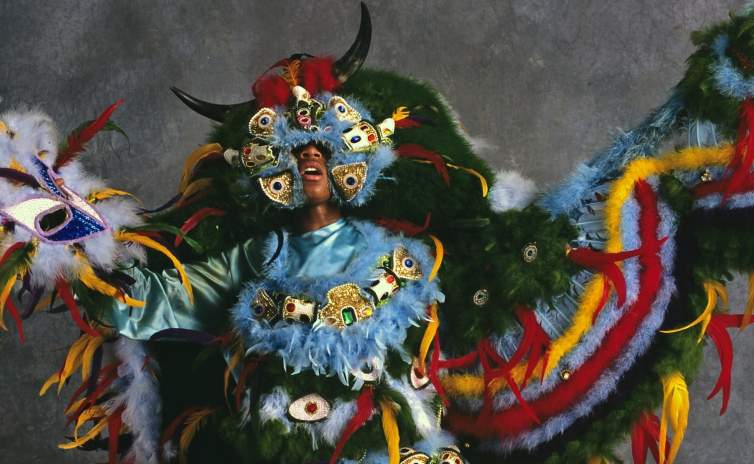
I beaded a suit that next year, my first suit. I was a Wild Man my first year. I got connected to another Black Masking family, who were the Seminoles, through the photographer Christopher Porché West. God bless us, he just passed away. He was one of my best friends. He did a photo shoot, and I met his friend Charlie there, whose family was the Seminoles. That's another style, another tribe. When I met Charlie, he told my mom, "He could mask with us. I know him, he could mask with us." My mom was like, "How much it cost?" And Charlie said, "$3,000."
My mom said, "Oh no, he not going to mask with y'all." Charlie was like, "He can mask with us. Papa going to show him how to sew." Papa was Ferdinand Bigard. He was the Cheyenne Warrior. He was one of the elder Big Chiefs.
That's how I got to Papa, and that's how I learned how to bead. Papa taught me. And from there, I started making beaded suits, masking with the Seminole. I was the Bad Boy Seminole under Big Chief Keith “Keitoe” Jones Keto. That's how my beading started, and how my career started.
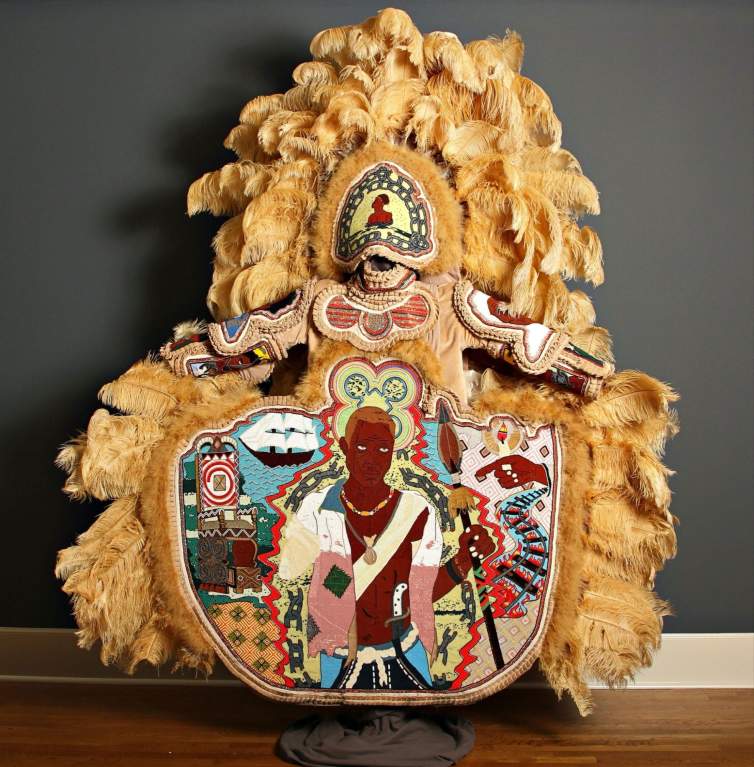
As time went on, I knew that my beadwork was evolving, because I started trying more things. And you know, these suits cost a lot of money. When I was young, you could make a suit with $1,000, but now the feathers are super high. As you get older, you gotta pay rent, you have aspirations to own a home one day, and all these things. You wake up the day after Mardi Gras and you’ve gotta pay the light bill. Sustainability became a major factor in my life, in making those suits.
As more and more people started telling me that my work was amazing, I started thinking of how to sustain myself, while not selling out the culture. I've always studied art, and I've always looked at painters and just fell in love with a lot of things that artists do. So, I started doing portraiture in my suits.
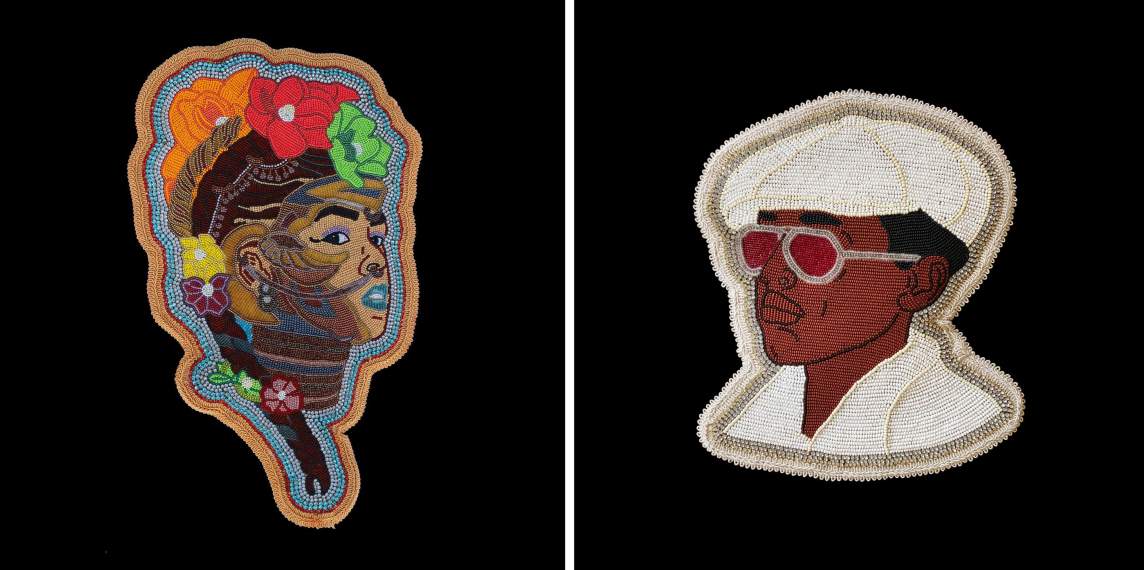
I knew that if I could get this stuff in the right places, in front of the right faces and the right people, that it was art. I had to balance making art to make my suits, without losing so much. Then I evolved into making art outside of the suits, because I love art. I just love it. And it's a challenge, because people are always asking, "Oh, that's beads?" They wonder what it is.
I'm always learning different ways of working. It's like being born again and young again. That's been my transition from Black Masker to becoming a contemporary artist. When I first started seeing my work sell, it was like, "Oh, this is real." I'm the only person in my family that does what I do, so I know I'm blessed in that way. That's why I make art. I can't stop. And then it's also about, how much is this process furthering my life?
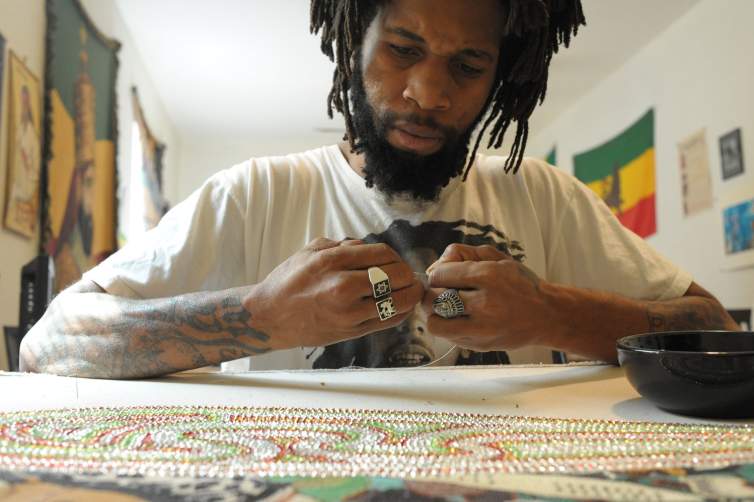
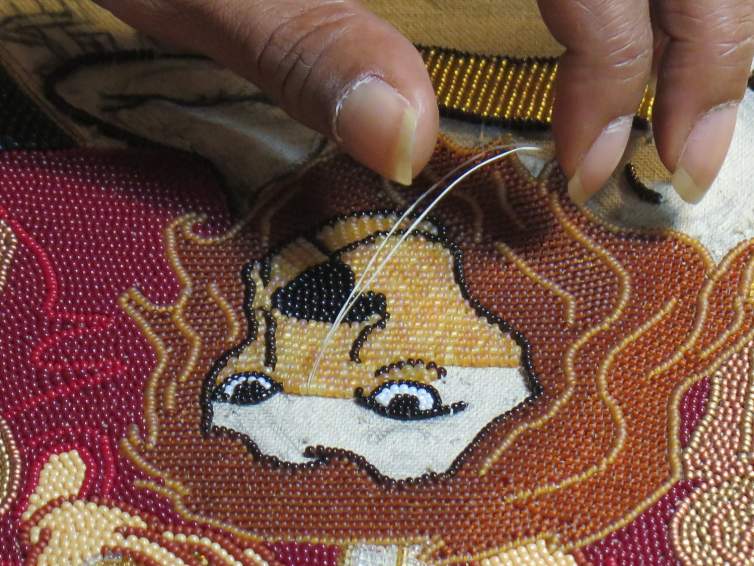
I'm inspired by looking at a lot of the suits that are out here in New Orleans, and a lot of artwork. I'm inspired by things I've seen people paint, like Kerry James Marshall, Barkley Hendricks, my friend Fahamu Pecou. I’m inspired by Nick Cave—his twig suits, the sound suits, the older pieces that he made. They have one that's up in NoMA, that I always look at when I go there. I just look at everybody and what they're doing, and I feel young again in the art world, like being born again.
I research a lot before I do a certain piece of the suit, doing a lot of reading or sketching. It's intuitive, too, when I'm beading something. I like to do a lot of old histories, like the Bras-Coupé suit I made, Haile Selassie. For the suit I'm making right now, I'm working on imagery from the Amistad takeover. None of the Black Maskers in the over 200-something-year culture ever did this kind of work that people wouldn't believe can be done in bead work. My elders, they would be so impressed with the histories that I'm beading.
I’m also inspired by the youngsters in New Orleans, who are trying to do new things in art, new things in suits. I'm inspired by them looking up to me, by the notion that I have to do more, so that people can be inspired by me. Because I'm the blueprint, in New Orleans, for making these suits.
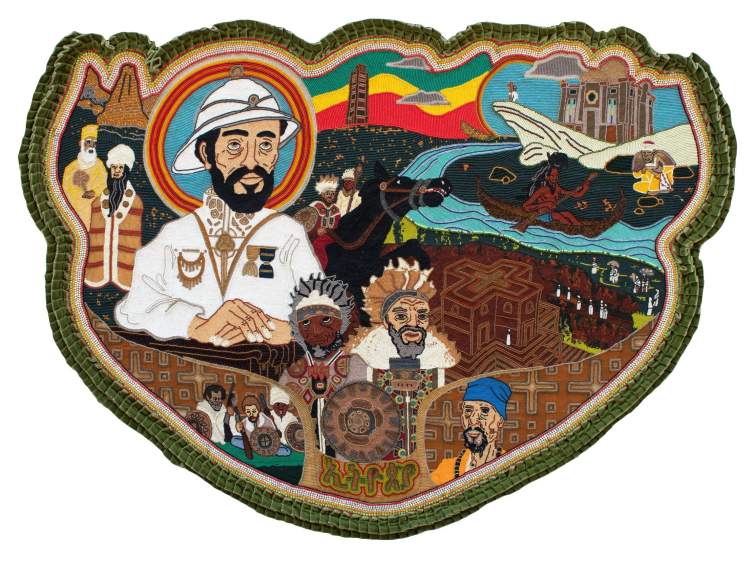
My little Spy Boy, he got into NOCCA [New Orleans Center for Creative Arts] a few years back. He did academic studio, and he used his suit as his audition piece. He was the first Indian in this city to ever be able to do that. That is what inspires me, those children. They need this. If children know that they can become contemporary artists from beading, that you can go to school and get degrees from beading, then a lot of the kids in my community, in my city, will be trying to do this. I want to be the model of that. So I have to continue to show them how it can be done, and continue to stress this work to them.
These youngsters, they’re always calling me, always texting me, they're always looking for beads. I'm giving them guidance on different things. That's what happens in this city. My elders, they had it hard, and they didn't do it like us, like me. They didn't have those blessings that I've received, through the art world, and just through people loving my art. I want to pass it down to the younger generations, so they can see how it feels to do that.
I sew hard, all year. When I put that suit on, and put those feathers on—ooh, you don't know me as Demond. It's a transformative feeling. You get the spirit of the elders that comes down on you, and you feel a different way. It’s Zulu. You feel like King of Mardi Gras, you feel like King of the Rex Parade. My whole tribe is looking up to me, and I'm looking up to them, too.
When you experience me in my suit, I want you to feel it in your heart. You got to catch the ChaWa. That means, your spirit has to entwine with my spirit. It's a feeling that you feel, that you have to come back for, to get that ChaWa. That's what I want the people to feel. I want people to feel like they haven't seen anything like that in their world, in their life. I make people feel the same way that I feel, when I'm wearing it. I want them to feel the same exchange.
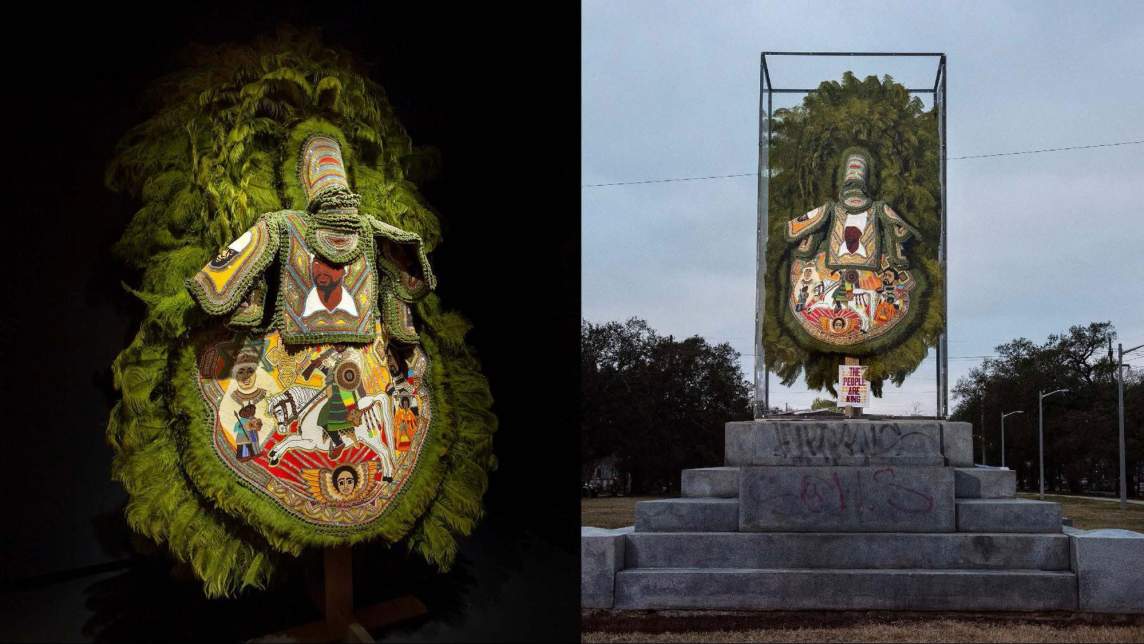
And if people see one of my suits or a beaded portrait in a museum or a gallery, I want them to feel the same thing. Especially when the suit is right there, you're going to feel it, like I'm standing in it. That presence is there. With the other pieces, you can feel it, from the detail in the bead work. That's why I pay attention to a lot of detail, because with the detail, people feel like, "How could he do that?" So then, you’re thinking magical, and you can get the same feeling I feel when I'm doing it, and when I look at it.
I have a show coming up at the Halsey Institute of Contemporary Art this fall, up in South Carolina. I'm working on pieces for that show, and I have some pieces on the way to the Australia Biennial in a few weeks—my 2011 Big Chief apron called Africa and my 2013 Big Chief apron, which is about 50 inches. It's the spirit of Red Cloud and Sitting Bull. That's going to Australia. I'm going to be doing the Chicago Art Expo, with Arthur Roger Gallery, my gallery. And then I’ve gotta do work for a show in October at Arthur Roger Gallery, and correspondence with Prospect.6 coming up this fall. So, I am super busy.
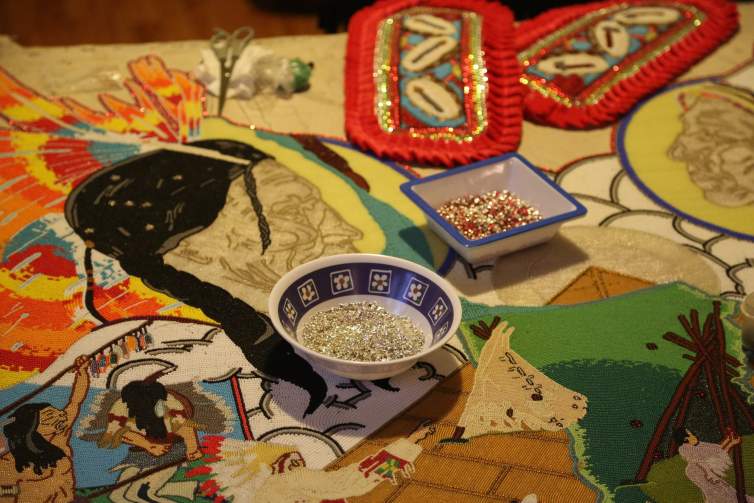
I have some new things I’m making called Spirit Suits. They are smaller than a big Big Chief Suit, and they're inspired by how many years I've been watching what Nick Cave is doing, and trying to figure out how I could do smaller pieces, to give to the gallery, to be able to show, without it being that big old crazy suit. I got to meet Nick Cave last year at Crystal Bridges. Fahamu Pecou brought me up to do a talk with him and Kevin Sipp for the closing of the Dirty South show. I got up there, and I got to meet one of my favorites, Nick Cave.
I have three feet of beading and rhinestone suits that I'm building right now for those Spirit Suits. I finished all the pieces to it, so now, I'm at the point where I'm about to start putting it together. I'm always working, always in the studio. I have a full plate. But I took on all of that because of the help from the Joan Mitchell Foundation. The little money I get, I'm able to spread it out, and be able to do more things. I'm able to expand my art career, and I really give thanks for that.
Interview and editing by Jenny Gill. Learn more about Demond Melancon’s work at demondmelancon.com and on Instagram.